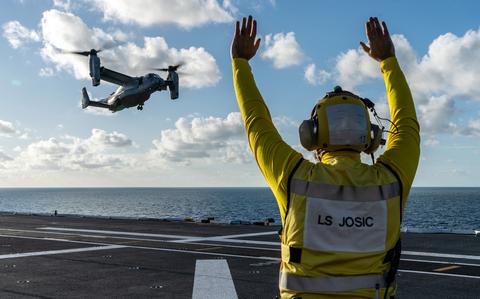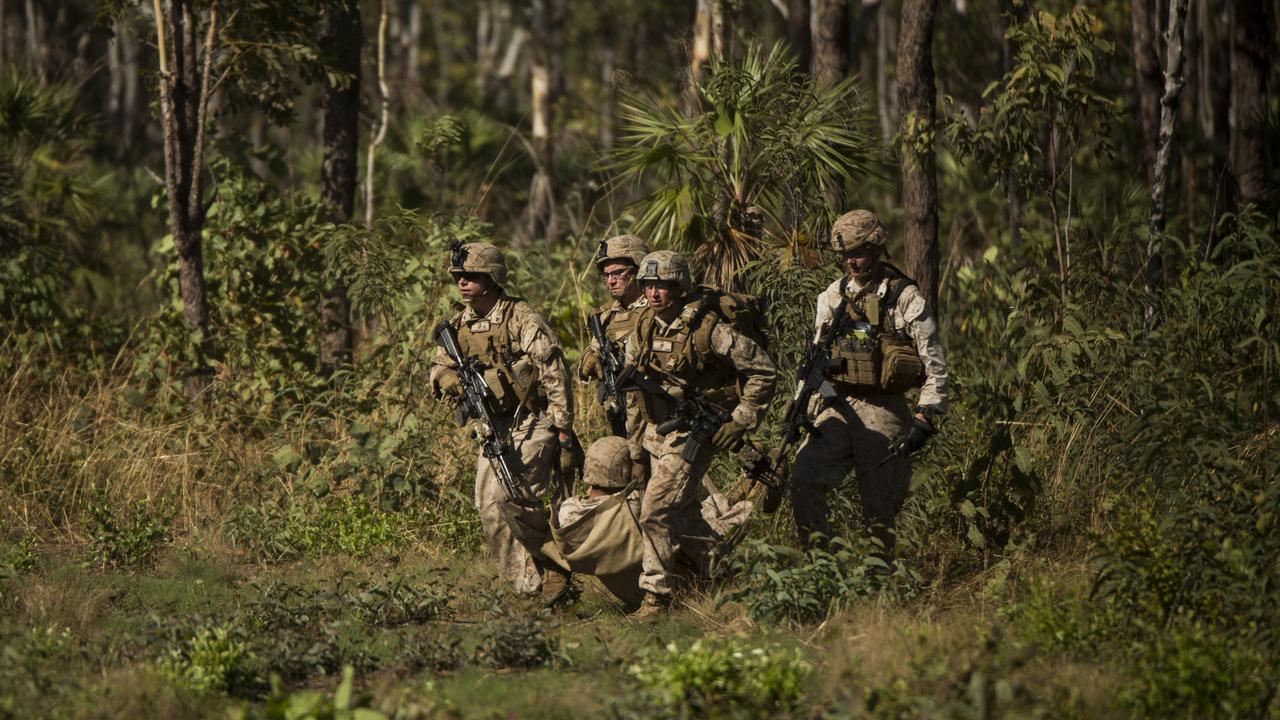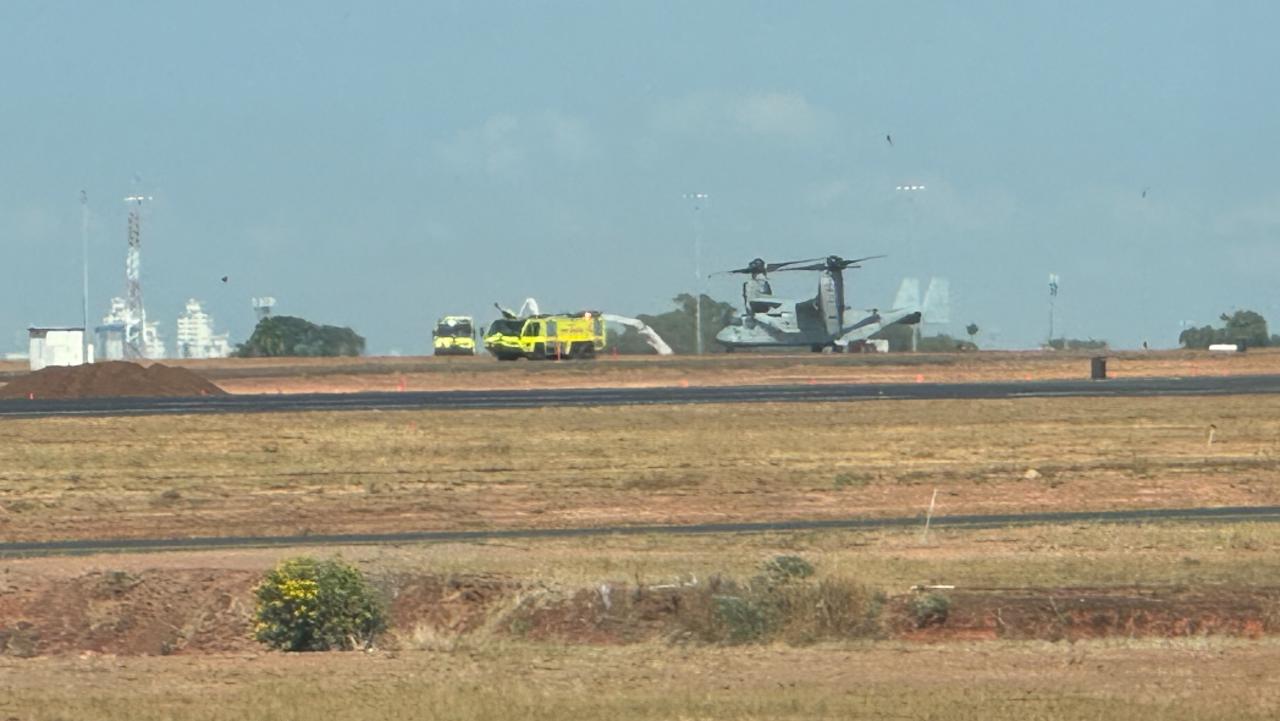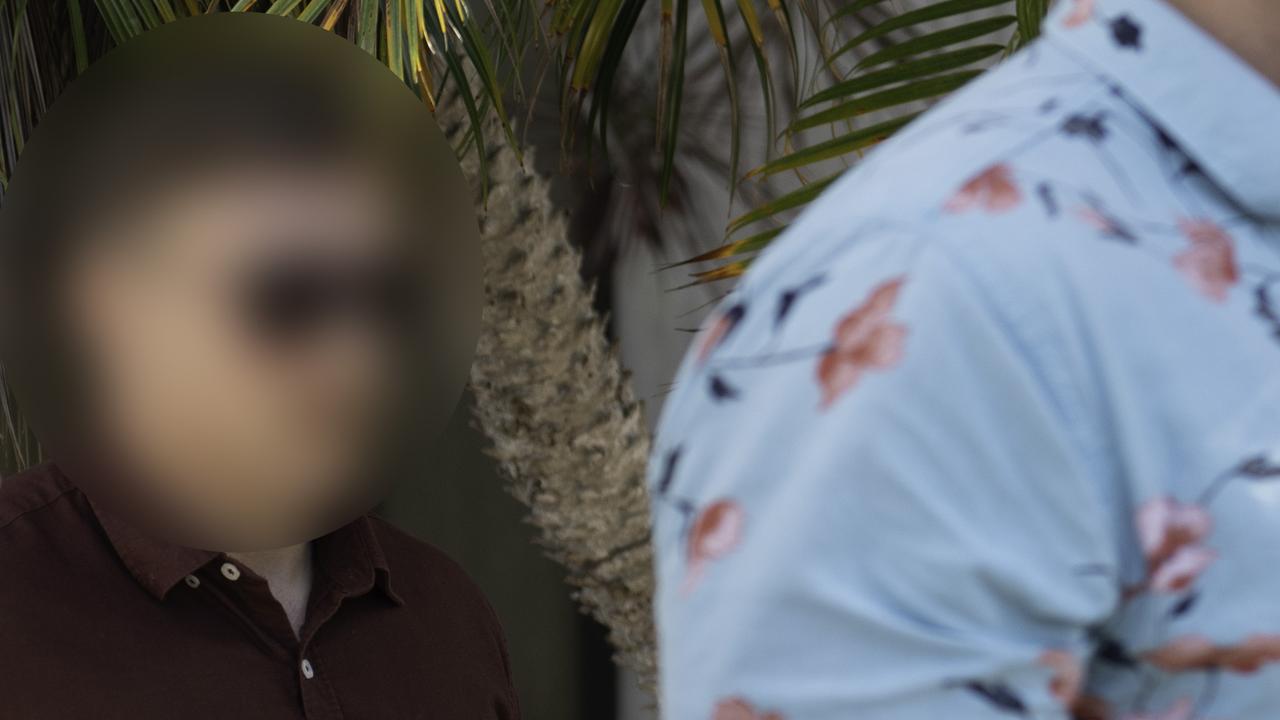
Navy Ospreys are not yet flying passengers to aircraft flight decks

Navy Ospreys are not yet flying passengers to aircraft flight decks

US officials are accusing the Pentagon of “recalcitrance” following attempts to obtain documents concerning the controversial aircraft. Meanwhile in the Top End, the tilt-rotors continue to fly.
The Australian Defence Force (ADF) have remained cagey on the issue and have failed to confirm whether ADF troops would be permitted to board the aircraft.
The accusation comes after the subcommittee on National Security, the Border, and Foreign Affairs announced it would explore the controversial aircraft’s extensive history of deadly crashes in a hearing this week.
Subcommittee Chairman Glenn Grothman blasted the “unacceptable” number of US service members killed on board the tilt-rotor and accused the Pentagon of not complying with the requests of elected officials.
It is expected the most recent Osprey crashes will be examined in detail, including the deadly crash at the Tiwi Islands in August 2023, in which three Marines were killed. On August 27, 2023, Captain Eleanor LeBeau, Major Tobin Lewis and Corporal Spencer Collart were killed after their MV-22 Osprey went down on the first day of Exercise Predators Run.

A senior coalition member has lashed out at a plan by the Greens to cancel defence contracts and shut down military bases, including the likes of Pine Gap, in a bid to stifle foreign military activity.
The Opposition spokesman for Defence Andrew Hastie wants a new defence committee to be restricted to Labor and Liberal members.
"The Greens plan includes ‘Renegotiate the US alliance to secure a new relationship focused on making us a better global citizen’ and ‘Close all military bases that foreign militaries have set up in this country’.”
“Of course, that would include Pine Gap, a really critical part of our alliance,” he said.
“It would also include the closure of any defence establishments in Darwin that support the current footprint of the Marine Expeditionary Force, which works so closely with the Australian Defence Force.”
“Liberals are trying to stop the Greens from joining a new defence committee because of policies like: be a good global citizen; close foreign bases and Pine Gap; the U.S.A. alliance; end AUKUS. Could you imagine if the ALP and Liberals had to consider these very popular policies?”

An emergency response at the Darwin Airport has been declared a false alarm after a pair of fire trucks raced across the tarmac to seemingly save a landed United States V-22 Osprey.
On Tuesday, morning, passengers and staff were left confused when the airport came to a stand still as two fire trucks entered the airstrip to pull up alongside the US Marine aircraft.
Civilian onlookers watched with anticipation, only for the fire and rescue teams to stand down and return to their bays, with airport operations resumed a short time later.
There was no emergency and no problem with the aircraft.

A US Marine charged with rape while on rotation in the Top End has had his plans to return home to await trial put on ice after being placed on bail in the Darwin Local Court on Friday.
The court heard the 24-year-old — who cannot be named before being committed to stand trial — had been issued with a notice to appear after the charge was laid on May 1.
But prosecutor Rhiannon McGlinn said her office had requested the case be relisted a day before his Marine Corps contract was due to lapse to ask that he be placed on bail instead.
In granting bail, Mr Neill ordered the man to live at the Defence Establishment Berrimah and not travel more than 100km from Darwin while surrendering his travel documents and steering clear of the airport.